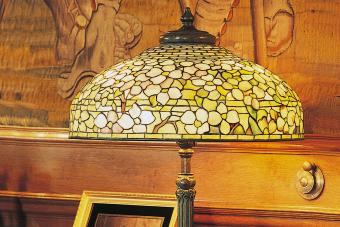
Whether you collect antique Chinese pottery vases, eighteenth century British sterling silver or any type of antique at all, you know the understanding of antique identification marks is invaluable.
Thousands of Antique Identification Marks
When thinking of all antiques in existence there are tens of thousands, if not more, of different identification marks. For instance one website, Antique-Marks, has more than 10,000 images of maker's marks and trademarks found on antique pottery and porcelain.
Every collector, whether a novice or seasoned, needs accurate resources that help to identify and value pieces of interest. The same is true for antique dealers, auctioneers and pickers. With the vast number of identification marks, it is virtually impossible to recognize all of the different manufacturers of one specific category, such as English porcelain. Many collectors that specialize in a specific type or era of antiques generally only recognize the most well known of the maker's marks, along with the marks of pieces they have a special interest in collecting.
Marks are Clues to an Antique's Past
Many antiques have marks on the underside that are stamped, impressed or painted. These marks generally help with identification and dating of the piece by giving a significant historical point of reference. Marks assist in determining one or more of the following:
- Manufacturer
- Approximate date of manufacture
- Country of origin
- How many of the item were produced
Identification marks on antiques are different depending on the following variables:
- The type of antique
- The material
- The time period
- The country of origin
Types of Identification Marks
The following are some of the more common types of identification marks found on antiques:
- Maker's mark
- Silver hallmarks
- Signed bronzes
- Foundry marks
- Pewter touch marks
- Engraved signatures on glass
- Design registration mark
Resources of Antique Identification Marks
There are many excellent resources of identification marks including books, price guides and websites.
Books and Price Guides
Many works have been written on maker's marks, hallmarks and other identifying marks of specific types of antiques. Price guides often include information on marks and other methods of identifying antiques. The following are several examples:
- Antique Trader's Doll Makers and Marks: A Guide to Identification by Dawn Herlocher
- American Silversmiths and Their Marks: The Definitive (1948) Edition by Stephen G. C. Ensko
- Kovels' New Dictionary of Marks: Pottery and Porcelain, 1850 to the Present by Ralph Kovel
- Pictorial Guide to Pottery & Porcelain Marks by Chad Lage
- Schroeder's Antiques Price Guide: Identification and Values of Over 50,000 Antiques by Sharon Huxford
- Kovels Dictionary of Marks - Pottery and Porcelain: 1650 to 1850 by Ralph and Terry Kovel
Online Resources
There are numerous websites dedicated to identifying antiques by their marks. The following is a small sampling of the many excellent websites.
- Antique-Marks is a reference work that is free to use. It provides an extensive listing of manufacturers marks found on pottery. Also offered on this website are the following:
-
- A summary of antique periods
- A full glossary of antiques terms
- A detailed history of many well- known artists and manufacturing companies
- Information on caring for antiques such as glass, silver and rugs
- Marks 4 Antiques
- Online Encyclopedia of Silver Marks, Hallmarks and Maker's Marks
- Silver Hallmarks and Marks is an illustrated guide that includes:
-
- Hallmarks
- Assayer marks
- Directory of maker
- Town and country of origin
Knowing where to find accurate information on antique identification marks gives collectors the knowledge they need when investing in a piece for their collection.







